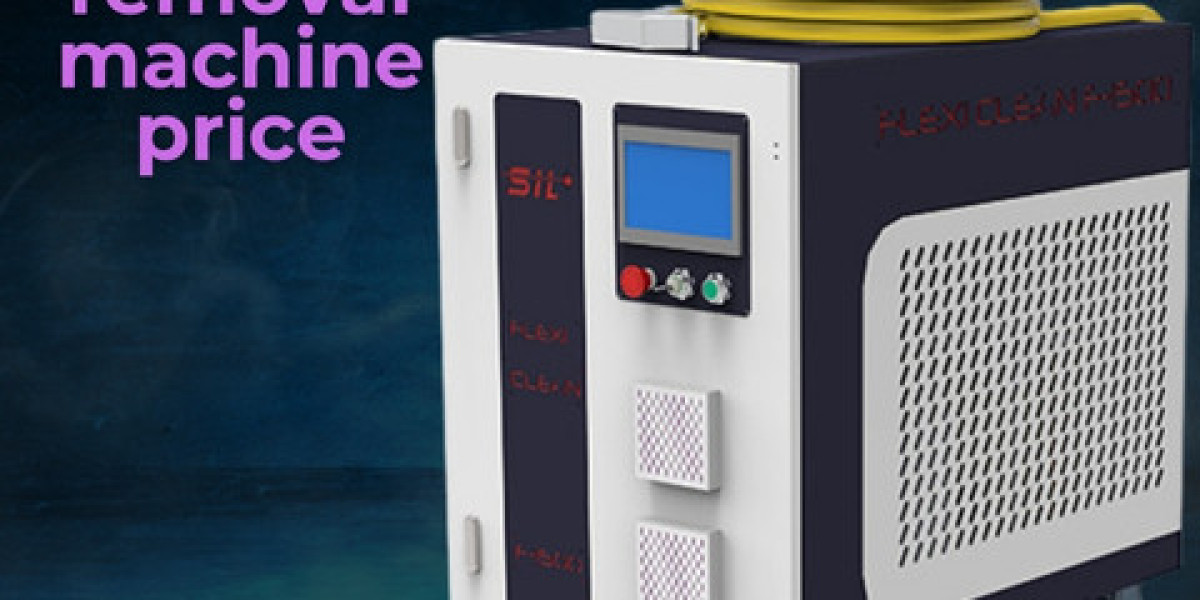This guide breaks down the elements that influence the laser rust removal machine price, helping professionals make informed decisions without falling for marketing traps or overpaying for underperforming machines. We’ll explore the core aspects that determine cost, clear up misconceptions about machine similarities, and highlight what a buyer should consider before making a purchase.
Power Rating and Its Cost Impact
Laser rust removal machines are typically rated in watts—ranging from 50W for light-duty applications up to 3000W or more for industrial-grade cleaning. As the power increases, so does the price. But this rise is not linear. A 200W machine might cost double that of a 100W version, while a 1000W setup can jump to several times more.
Higher wattage allows faster cleaning speeds, deeper rust removal, and a broader range of material compatibility. However, higher-powered machines also require stronger safety systems, better cooling mechanisms, and more robust components—all of which add to the price. This means the laser rust removal machine price isn’t just about wattage, but everything built around it to manage that power effectively.
Laser Source Type and Brand
The core of every laser rust removal machine is the laser source, and its origin and brand significantly affect the price. Commonly used sources include:
Fiber lasers (e.g., IPG, Raycus, Max): Fiber sources are efficient, long-lasting, and low-maintenance. Machines using high-end brands like IPG usually carry a premium.
Diode-pumped solid-state lasers: Less common but still used in certain systems.
Imported vs. Local Sources: Machines assembled with imported parts, especially laser sources, often come with a higher price tag due to shipping, tariffs, and brand value.
The source also determines beam quality and stability. Buyers comparing two similar-looking machines should ask specifically about the brand and model of the laser source. The same power rating from different manufacturers may behave very differently in real use, and that directly affects value.
Scanning Head and Control System
The scanning head, responsible for directing the laser beam, plays a critical role in both precision and durability. High-speed galvanometer heads cost more but ensure smoother and more consistent cleaning performance.
The control system, typically software-managed through a touchscreen or computer interface, also adds to the cost. Advanced systems support customizable patterns, variable pulse frequencies, and safety interlocks—all of which are necessary for professional use.
A machine with a rugged, industrial-grade control panel and real-time diagnostics will naturally carry a higher price than a model with basic interface features. This is one of the most commonly overlooked factors in the total laser rust removal machine price.
Cooling Mechanism: Air vs. Water
Laser machines generate heat, especially those with 1000W+ power ratings. Cooling methods directly impact performance and safety:
Air-cooled systems: Usually found in lower-powered machines (≤200W). More compact and less expensive.
Water-cooled systems: Required for higher-power setups. These systems use chillers to manage the heat and come with additional components, maintenance needs, and cost.
A buyer searching for a “portable” or “compact” machine may be looking at air-cooled units, but these are often limited in long-term performance. Investing in water-cooled systems significantly increases the laser rust removal machine price, but it’s essential for industrial operations.
Handheld vs. Robotic Systems
The laser rust removal machine comes in two major categories:
Handheld systems: Common for fieldwork and manual operation. More affordable and mobile.
Robotic or CNC-integrated systems: Found in automated production lines. Expensive, with programmable arms and conveyors.
Although handheld systems dominate the market due to their flexibility, robotic models are gaining traction in large-scale operations. Buyers need to be cautious when comparing prices across these categories, as robotic systems may appear expensive but offer very different value in terms of automation.
Build Quality and Enclosure Design
Two machines may have the same wattage and source brand but can differ drastically in frame strength, cable quality, and enclosure design. Industrial-grade machines are designed for rough handling and continuous operation. They often include:
Reinforced outer shells
Sealed optics housing
Vibration-dampening mounts
Heavy-duty connectors
Lower-end models, especially those designed for short-term or hobbyist use, may skip these details, reducing their price but also their lifespan. It’s important to physically inspect a unit or get detailed specifications and warranty information before assuming it’s a good deal.
Safety Features Included
Safety is non-negotiable in laser systems. The inclusion of:
Emergency stop buttons
Laser interlock systems
Beam shielding
Warning indicators
CE/FDA/ISO certifications
…can significantly influence pricing. Certified machines built for use in Europe or North America will typically carry a higher laser rust removal machine price due to compliance costs.
Buyers tempted by cheaper options on open marketplaces should investigate whether the machine includes or supports necessary safety gear. Operating without proper shielding or interlocks not only voids warranties but also violates regulations in many jurisdictions.
After-Sales Support and Training
Service, warranty, and training are part of the total machine cost. A machine might cost $5,000 less, but if it comes with no technician support, zero training, or a minimal warranty, that saving disappears quickly once problems arise.
Top-tier manufacturers often bundle:
1–2 years parts warranty
Remote diagnostics support
Onsite technician availability
Comprehensive training sessions
All of these contribute to a higher upfront price but reduce the chance of costly downtime or misuse. Buyers looking beyond the sticker price will find that quality after-sales support often outweighs initial cost savings.
Import Duties, Shipping, and Local Regulations
Laser machines often cross borders—especially when sourced from China, Germany, or the USA. The laser rust removal machine price listed by manufacturers does not include import duties, taxes, shipping fees, or customs clearance charges.
Depending on the buyer’s country, these fees can add 10–30% or more to the final price. Buyers should also factor in local voltage requirements, frequency settings (50Hz vs. 60Hz), and permissible power limits.
A machine that’s competitively priced overseas might require significant modifications or incur hidden logistics costs before it can be used locally.
Used vs. New Machines
Second-hand laser rust removal machines are available on the market, often at 30–50% off retail price. However, buyers need to assess:
Laser source usage hours
Maintenance records
Software compatibility
Remaining warranty
The price might be attractive, but a worn-out laser or unsupported software version could mean high repair or upgrade costs. Reliable resellers offer certified refurbished units with warranty, which is a safer middle ground.
Typical Price Ranges in the Market
To give a general overview:
Low-end (≤100W): $2,000 – $6,000
Mid-range (100W–500W): $6,000 – $15,000
High-power handhelds (1000W+): $15,000 – $35,000
Industrial robotic systems: $35,000 – $100,000+
Keep in mind that pricing can shift quickly based on supply chain availability, component sourcing, and even currency fluctuations.
Final Thoughts
Understanding the laser rust removal machine price involves more than just comparing wattage or brand names. Each component, from the laser source to the safety features, plays a role in shaping the total cost. Buyers who focus solely on price often overlook the performance, durability, and compliance needs that come with long-term use.
Rather than hunting for the cheapest option, the smarter approach is value analysis—examining what’s included, how it aligns with your operation, and how well it will serve over years of use. A well-priced machine isn’t the one with the lowest figure, but the one that delivers consistent results with minimal interruptions.
By knowing what’s behind the price tag, professionals can avoid hidden costs, navigate vendor claims confidently, and make an investment that supports their work—not hinders it.








